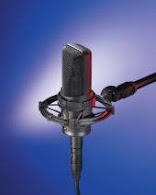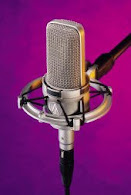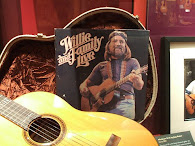
Fender's NEW Passport 500 Pro builds on the old PD-500 Deluxe model but how does it stack up?
I have the original Fender Passport PD-500 Portable PA System which I reviewed along with my Roland SA-300 Stage Amp here:
Fender PD-500 and Roland SA-300 Pro Reviews
Fender PD-500 and Roland SA-300 Pro Reviews
So What's New?
Released earlier this year, some upgraded features of the Fender Passport 500 Pro include a port to record directly via (.wav, Mp3) to a USB flash drive. This can save space over storing large music files on yo
 ur computer and is an easy way to record your live performances. The previous model Passport has high quality Celestion Speakers but the new Passport Pro 500 only says it has speaker cabinets each with 10" woofers and a 1.2 horn loaded tweeter. There is no mention of the type of speakers they are using in the new model although a Fender engineer claims they were "designed" by Celestion. Celestion speakers are some of the best I've heard in a live setting. The original Passport PD-500 has 8" Neo-Precision Celestion speakers and one titanium compression driver with horn per cabinet. This one technical aspect makes a HUGE difference in the system's quality and tone. One of the complaints I read from a musician who purchased the new Passport 500 Pro was that the sound from the speakers was" thin and lifeless and the amp very easily clips at moderate volume."
ur computer and is an easy way to record your live performances. The previous model Passport has high quality Celestion Speakers but the new Passport Pro 500 only says it has speaker cabinets each with 10" woofers and a 1.2 horn loaded tweeter. There is no mention of the type of speakers they are using in the new model although a Fender engineer claims they were "designed" by Celestion. Celestion speakers are some of the best I've heard in a live setting. The original Passport PD-500 has 8" Neo-Precision Celestion speakers and one titanium compression driver with horn per cabinet. This one technical aspect makes a HUGE difference in the system's quality and tone. One of the complaints I read from a musician who purchased the new Passport 500 Pro was that the sound from the speakers was" thin and lifeless and the amp very easily clips at moderate volume."The first 6 Mono channels on the new Passport 500 Pro offer 48 V phantom power and the last two are stereo channels with connections for RCA cables such as would be used with our Gemini 3600 DJ Dual CD Workstation or a CD player. This is standard with the original Passport PD-500 as well which additionally offers Feedback Killer on all line level channels and phantom power switchability on the first 6 channels. There is also an onboard mixer with Digital FX controls for each channel on the old Passport PD-500. The new model only has reverb, not a full on Digital FX panel as before. The speaker cables with the original Passport PD-500 inclu
 ded the Neutrik locking Speakon connectors, (pictured above), which are some of the best available. The new Passport 500 Pro does not have the Speakons but cheaper speaker cables included.
ded the Neutrik locking Speakon connectors, (pictured above), which are some of the best available. The new Passport 500 Pro does not have the Speakons but cheaper speaker cables included.Wireless Applications?
One of the features I did see carried over to the new Passport is the Wireless Docking System which is installed in the storage compartment of the unit. The Fender Executive Wireless Kit which is purchased separately, includes headworn and lavaliere mics PLUS and wireless guitar connector. This is unique because you did not need to bring along a separate, external wireless system. The Fender Passport Wireless runs off of the amp's power. The wireless application expands the versatility of the Passport, allowing you to travel light. PHOTO: Older Fender Passport P-150 hard at work in a Cafe setting. Vintage USA made Crate GX-20M Guitar Amp out front.
Included Accessories?
The original Fender Passport PD-500 Deluxe came with two decent quality Fender P 51 dynamic mics with cables. Each mic came with a zippered carrying case. They all fit neatly in the storage compartment of the unit. The older system was complete and road ready right out of the box. While I prefer Audio-Technica's condenser mics, the Fenders were not bad as dynamics go. The new Fender Passport 500 Pro does not come with any microphones or mic cables.
The Wrap:
While this was a basic first glance over-view, there are some things to note about the Fender Passport Series in general. They are not in the same class as Fender's classic guitar amps. The Passport is first and foremost a PA System but the Celestion Speakers with titanium compression drivers on the previous model gave the system a definite edge. Even with their upgrade being 9 lbs lighter, the weight and shape of the Passport is not practical towards carrying in as you would a "suitcase". I have used a Rock 'N Roller Micro Cart to transport it to gigs. In fact American Musical Supply's catalog has the Rock 'N Roller cart advertised on the same page as the new Passport 500 Pro! You will also need a custom canvas dust cover, (available from Fender), as the molded plastic on the speaker cabinets is easily scratched. (Check out this article on how to set up multi-effects such as the BOSS GT-10 and DigiTech RP-90 with the Roland SA-300 Stage Amp / PA System).
As for reliability, I have seen Fender Passports of all sizes and ages used in a variety of settings from stage plays to cafe concerts. The Passports have a 5 year transferable warranty, which is quite good even by today's standards so be sure to complete registration online or by snail mail. My Fender Passport PD-500 quit on me during a gig due a sub-par diode. It sat in an Authorized Fender Electronics Service Center for 10 months waiting for the rare replacement part to arrive. Passports are made in China so perhaps that and the fact the PD-500 has been discontinued contributed to the wait. Fender is offering the Passport 500 Pro at about $400.00 less than the original PD-500 it is replacing. As the saying goes, you get what you pay for. Don't be fooled. The new Passport 500 Pro is not the "flagship" of the Passport line or an upgrade in the series. At the MSRP of $1,499.99, $999.99, Street the new Fender Passport Pro 500 appears to offer less in quality components but more technical apps than it's predecessor, the PD-500. Either way, I would pass on the new Passports.
























































No comments:
Post a Comment